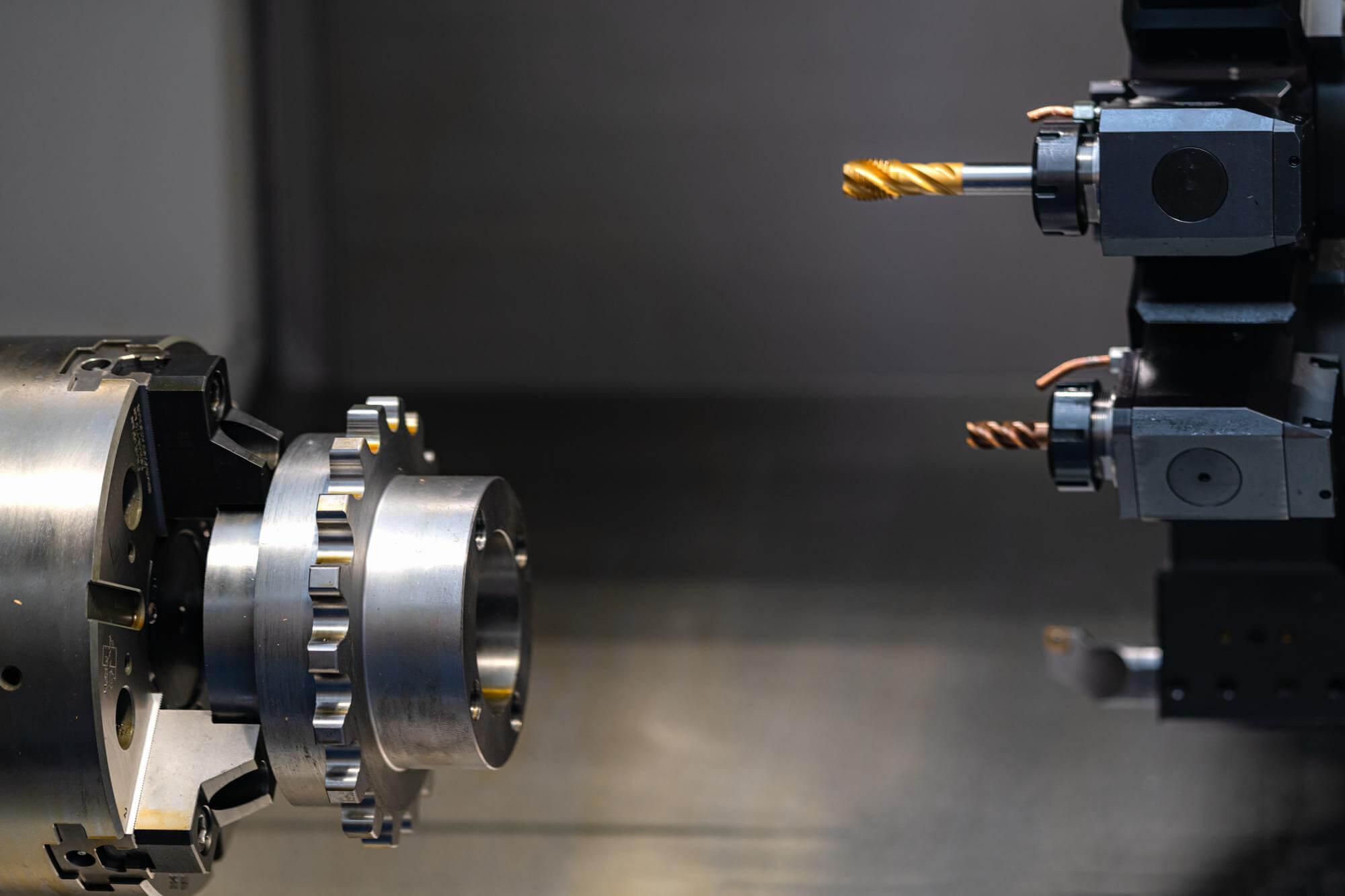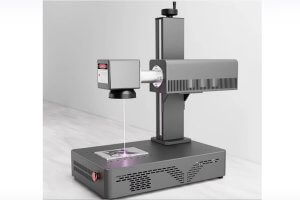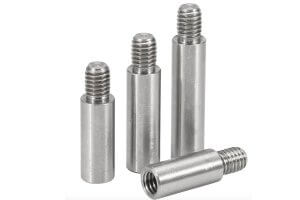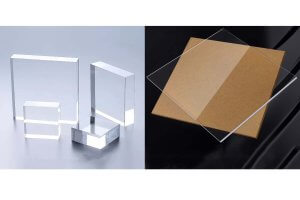High-speed cutting techniques have revolutionized CNC machining, offering not only increased production efficiency but also superior surface finishes on machined parts. The appeal of high-speed machining lies in its ability to produce high-quality surfaces, which are essential for the performance and longevity of the parts. In this article, we’ll explore the factors influencing the surface finish during high-speed cutting and provide practical insights into optimizing this process.
Understanding Surface Roughness
Surface roughness is a critical indicator of the quality of a machined part. It affects the part’s performance in terms of contact stiffness, sealing, wear resistance, corrosion resistance, and fatigue strength. Surface roughness is influenced by both geometric factors and non-geometric factors. Geometric factors consider the cutting edge as a geometric line segment moving relative to the workpiece, forming the roughness. This theoretical roughness is typically calculated based on residual height. However, actual machining often results in greater roughness due to non-geometric factors such as built-up edges, chatter, tool wear, material defects, and the use of cutting fluids.
High-Speed Cutting of Aluminum Alloys
When machining aluminum alloys at high speeds, tool materials like diamond, coated tools, and carbide tools are commonly used. The advantage of high-speed cutting is evident in the milling of aluminum alloys. For instance, when milling 7075-T6 aluminum alloy, the surface roughness decreases with increasing cutting speed. Tools such as Kennametal’s diamond and carbide tools have shown significant improvements in surface finish at higher speeds. Beyond a certain speed, the roughness stabilizes, indicating the optimal cutting speed for the best surface finish.
| Tool Type | Cutting Speed (m/min) | Surface Roughness (µm) |
|---|---|---|
| Diamond | 1524 | 0.2 |
| Carbide | 1524 | 0.3 |
| Diamond | 2000 | 0.18 |
| Carbide | 2000 | 0.25 |
High-Speed Cutting of Cast Iron
Cast iron, a common material in manufacturing, benefits significantly from high-speed cutting. Tools made from cubic boron nitride (CBN), silicon nitride-based ceramics, and coated carbides are ideal for this task. High-speed cutting can achieve cutting speeds of up to 1000 m/min, significantly improving surface roughness. For example, using silicon nitride-based ceramic tools and coated carbide tools, surface roughness decreases as cutting speed increases, reaching an optimal roughness at speeds between 500 to 800 m/min.
| Tool Type | Cutting Speed (m/min) | Surface Roughness (µm) |
|---|---|---|
| Silicon Nitride | 500 | 0.35 |
| Coated Carbide | 500 | 0.45 |
| Silicon Nitride | 800 | 0.25 |
| Coated Carbide | 800 | 0.4 |
Surface Roughness of Steel and Alloys
When high-speed milling quenched steel such as 45 quenched steel (HRC 45-50), surface roughness improves significantly as cutting speed increases. Using ceramic tools, roughness values can reach as low as 0.1 µm at speeds between 800 to 850 m/min, achieving a grinding-like finish. This “cut instead of grind” approach offers a more efficient and economical way to achieve high-quality surfaces.
For tempered steel (HRC 30-35), using 3020 coated carbide tools, surface roughness is less influenced by cutting speed and feed rate. However, the best results are achieved with speeds around 600 m/min and feed rates between 0.08 to 0.18 mm per tooth.
| Material | Tool Type | Cutting Speed (m/min) | Feed Rate (mm/tooth) | Surface Roughness (µm) |
|---|---|---|---|---|
| 45 Quenched Steel | Ceramic | 800 | 0.1 | 0.1 |
| 45 Tempered Steel | Coated Carbide | 600 | 0.08 – 0.18 | 0.2 |
Factors Affecting Surface Finish
Tool Material and Geometry: The choice of tool material significantly affects the surface finish. Diamond tools and coated carbide tools are preferred for high-speed applications due to their hardness and wear resistance. The geometry of the tool, including its rake angle, clearance angle, and cutting edge radius, also plays a crucial role in determining the surface finish.
Cutting Parameters: Cutting speed, feed rate, and depth of cut are the primary parameters that influence surface roughness. Higher cutting speeds generally improve the surface finish by reducing built-up edges and minimizing material deformation. However, there is an optimal speed range beyond which surface roughness may worsen due to increased tool wear.
Coolant and Lubrication: Proper use of coolant and lubrication can significantly enhance surface quality by reducing cutting temperatures, minimizing tool wear, and flushing away chips. Water-soluble coolants mixed with oil are commonly used in high-speed machining.
Machine Tool Rigidity and Vibration: The rigidity of the machine tool and the absence of vibration are critical for achieving a superior surface finish. Vibrations can lead to chatter marks and irregularities on the machined surface. Ensuring that the machine tool is properly maintained and operated within its designed limits is essential for high-quality machining.
Workpiece Material: Different materials respond differently to high-speed cutting. For example, aluminum alloys tend to produce better finishes at high speeds compared to ferrous materials due to their lower hardness and better machinability. Understanding the material properties and selecting appropriate cutting conditions are key to optimizing surface finish.
Practical Tips for Improving Surface Finish
- Select the Right Tool Material: Use tools made from diamond, CBN, or coated carbide for high-speed machining. These materials provide excellent wear resistance and can maintain sharp cutting edges at high temperatures.
- Optimize Cutting Parameters: Experiment with different cutting speeds, feed rates, and depths of cut to find the optimal combination for your specific material and tool. Keep in mind that higher speeds often yield better finishes, but excessive speeds can increase tool wear.
- Use Coolant Effectively: Ensure that coolant reaches the cutting zone effectively. Use high-pressure coolant systems to remove heat and chips efficiently, preventing surface damage.
- Maintain Machine Tool Condition: Regularly check and maintain the machine tool to ensure its rigidity and precision. Address any sources of vibration or looseness in the machine setup.
- Monitor Tool Wear: Keep an eye on tool wear and replace tools before they become too dull. Worn tools can significantly degrade the surface finish and cause dimensional inaccuracies.
- Implement Fine Finishing Passes: After roughing operations, use fine finishing passes with lower feed rates and smaller depths of cut to achieve the desired surface quality.
High-speed cutting techniques offer a pathway to achieving superior surface finishes in CNC machining parts. By understanding and optimizing the factors that influence surface roughness, manufacturers can significantly enhance the quality and performance of their machined parts. Whether machining aluminum, cast iron, or steel, the principles of high-speed cutting remain consistent: select the right tools, optimize cutting speeds, and maintain proper tool conditions. Embracing these techniques not only elevates the surface finish but also propels the efficiency and effectiveness of CNC machining operations.
Other Articles You Might Enjoy
- Optimizing CNC Machining Parts Using Constant Surface Speed Techniques
CNC machining, particularly on lathes, can be a complex process, but understanding and utilizing constant surface speed (CSS) techniques can simplify and enhance the efficiency of your operations. The key…
- High-Speed Machining Techniques in CNC Machining Parts: Secrets to Enhanced Efficiency and Quality
High-speed machining (HSM) is an intriguing and evolving field within CNC machining. The term "high-speed" is relative and varies depending on the machining method, workpiece material, and tool material. Defining…
- High-Speed Cutting Legends Transforming CNC Machining Parts
High-speed cutting (HSM or HSC) is not just a technological advancement; it's a fascinating journey of innovation that has transformed CNC machining parts over the decades. Let's take a trip…
- Optimizing for Speed: Lightweight Materials in High-Speed CNC Machining
Introduction to CNC Machining and the Importance of Speed Optimization In the manufacturing industry, Computer Numerical Control (CNC) machining plays a crucial role. It is a process employing computerized devices…
- Surface Refinement: Leveraging Bead Blasting for CNC Machining
In the realm of CNC machining, surface quality plays a pivotal role in determining the overall performance and aesthetics of the final product. Leveraging bead blasting as a surface refinement…
- High-Speed Spiral Milling Techniques for CNC Machining Parts
In the world of mold and aerospace machining, two-dimensional cavity machining stands out as one of the most material-intensive and time-consuming processes. For example, the machining of integral wall panels…
- Rapid Prototyping with CNC Machining: High-Quality Stainless Steel Parts
Rapid Prototyping with CNC Machining: High-Quality Stainless Steel Parts In the vast realm of manufacturing, Rapid prototyping and CNC machining are integral strategies that largely contribute to efficient production processes.…
- Face Milling Essentials for CNC Machining Parts
Face milling is an essential operation in CNC machining, aimed at controlling the height of the workpiece and ensuring a smooth surface finish. This process often uses multi-tooth cutters, known…










 Afrikaans
Afrikaans Albanian
Albanian Amharic
Amharic Arabic
Arabic Armenian
Armenian Azerbaijani
Azerbaijani Basque
Basque Belarusian
Belarusian Bengali
Bengali Bosnian
Bosnian Bulgarian
Bulgarian Catalan
Catalan Cebuano
Cebuano Chichewa
Chichewa Chinese (Simplified)
Chinese (Simplified) Chinese (Traditional)
Chinese (Traditional) Corsican
Corsican Croatian
Croatian Czech
Czech Danish
Danish Dutch
Dutch English
English Esperanto
Esperanto Estonian
Estonian Filipino
Filipino Finnish
Finnish French
French Frisian
Frisian Galician
Galician Georgian
Georgian German
German Greek
Greek Gujarati
Gujarati Haitian Creole
Haitian Creole Hausa
Hausa Hawaiian
Hawaiian Hebrew
Hebrew Hindi
Hindi Hmong
Hmong Hungarian
Hungarian Icelandic
Icelandic Igbo
Igbo Indonesian
Indonesian Irish
Irish Italian
Italian Japanese
Japanese Javanese
Javanese Kannada
Kannada Kazakh
Kazakh Khmer
Khmer Korean
Korean Kurdish (Kurmanji)
Kurdish (Kurmanji) Kyrgyz
Kyrgyz Lao
Lao Latin
Latin Latvian
Latvian Lithuanian
Lithuanian Luxembourgish
Luxembourgish Macedonian
Macedonian Malagasy
Malagasy Malay
Malay Malayalam
Malayalam Maltese
Maltese Maori
Maori Marathi
Marathi Mongolian
Mongolian Myanmar (Burmese)
Myanmar (Burmese) Nepali
Nepali Norwegian
Norwegian Pashto
Pashto Persian
Persian Polish
Polish Portuguese
Portuguese Punjabi
Punjabi Romanian
Romanian Russian
Russian Samoan
Samoan Scottish Gaelic
Scottish Gaelic Serbian
Serbian Sesotho
Sesotho Shona
Shona Sindhi
Sindhi Sinhala
Sinhala Slovak
Slovak Slovenian
Slovenian Somali
Somali Spanish
Spanish Sundanese
Sundanese Swahili
Swahili Swedish
Swedish Tajik
Tajik Tamil
Tamil Telugu
Telugu Thai
Thai Turkish
Turkish Ukrainian
Ukrainian Urdu
Urdu Uzbek
Uzbek Vietnamese
Vietnamese Welsh
Welsh Xhosa
Xhosa Yiddish
Yiddish Yoruba
Yoruba Zulu
Zulu